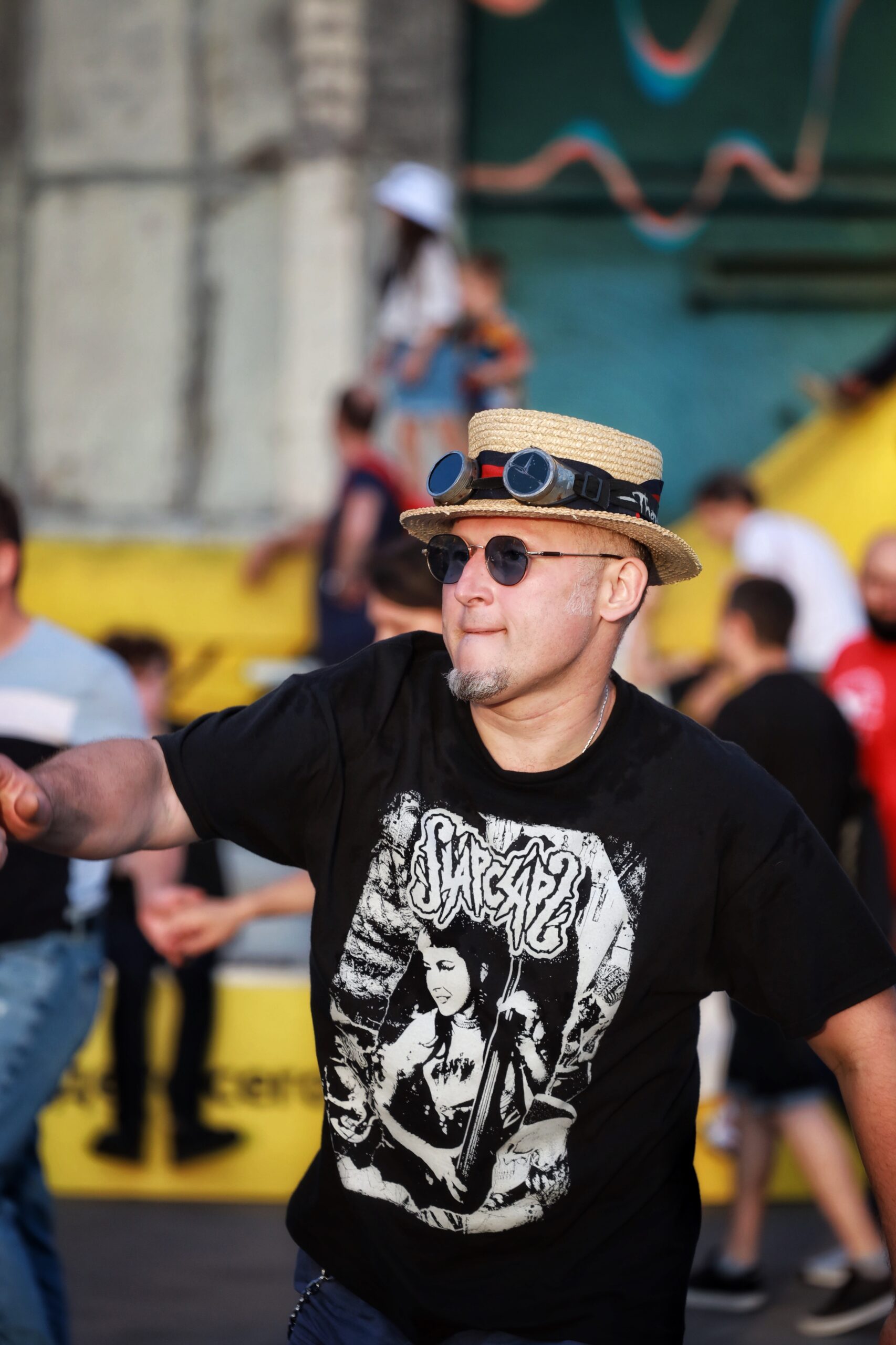So you’ve heard of talk therapy, art therapy, and even music therapy, but have you ever heard of dance/movement therapy? This unique form of therapy combines movement and dance with the expressive qualities of the body to promote healing and overall well-being. By using movement as a medium, individuals are able to tap into their emotions, release tensions, and gain a deeper understanding of themselves. In this article, we will explore the key principles and benefits of dance/movement therapy, and how it can be an effective tool in promoting self-discovery and personal growth.

Overview of Dance/Movement Therapy
Definition of dance/movement therapy
Dance/movement therapy is a form of psychotherapy that uses movement and dance to support emotional, physical, cognitive, and social integration of individuals. It is based on the premise that the body and mind are interconnected, and that movement can be a powerful tool for self-expression and healing. Through dance and movement, individuals are encouraged to explore their inner world, express their emotions, and develop a greater sense of self-awareness and self-esteem.
History of dance/movement therapy
Dance/movement therapy has its roots in ancient times when movement was used as a healing tool in various cultures. However, it emerged as a distinct discipline in the 1940s through the pioneering work of dance artist Marian Chace and psychiatrist Dr. Arthur Robbins. It was further developed and formalized by dance therapist Mary Whitehouse and psychologist Dr. Daria Halprin in the 1960s. Since then, dance/movement therapy has gained recognition as an effective therapeutic approach, with professional organizations and training programs established worldwide.
Goals and principles of dance/movement therapy
The main goal of dance/movement therapy is to promote self-expression, integration, and overall well-being through movement and dance. Its principles are grounded in the belief that the body has inherent wisdom and can serve as a source of healing and transformation. Dance/movement therapists work with individuals, groups, and communities to foster self-awareness, emotional regulation, communication skills, and interpersonal relationships. They provide a safe and supportive environment where individuals can explore movements, sensations, and emotions, ultimately leading to increased self-confidence, empowerment, and improved quality of life.
Benefits of Dance/Movement Therapy
Physical benefits
Dance/movement therapy offers numerous physical benefits. Through engaging in movement and dance, individuals can improve balance, coordination, flexibility, and physical strength. It can also help in managing pain, reducing muscle tension, and enhancing body awareness. The rhythmic and repetitive movements involved in dance can stimulate the release of endorphins, leading to a sense of relaxation and overall well-being. Additionally, regular participation in dance/movement therapy can contribute to maintaining a healthy weight, improving cardiovascular health, and promoting overall physical fitness.
Emotional benefits
Emotional wellbeing is a key aspect of dance/movement therapy. Movement and dance provide an outlet for expressing and processing emotions that may be difficult to articulate verbally. Through dance, individuals can access and release pent-up emotions, such as anger, sadness, or joy. This emotional release can lead to a sense of catharsis and relief, allowing individuals to gain insight into their emotions and develop healthier coping strategies. Dance/movement therapy also promotes emotional regulation and resilience, helping individuals to better manage stress, anxiety, and depression.
Psychological benefits
Dance/movement therapy has significant psychological benefits. It can enhance self-esteem and body image, as individuals become more attuned to their bodies and their abilities to move and express themselves. The creative and improvisational nature of dance allows individuals to explore different aspects of their personalities and cultivate a sense of identity and agency. Dance/movement therapy can also improve cognitive functioning, including attention, memory, and executive functions. It has been used successfully as an adjunctive therapy for individuals with cognitive impairments or neurodegenerative disorders.
Social benefits
One of the key benefits of dance/movement therapy is the promotion of social interaction and community connection. Group-based dance/movement therapy sessions provide opportunities for individuals to interact with others, fostering a sense of belonging and social support. Through group dances and shared movement experiences, individuals can develop empathy, communication skills, and cooperation. Dance/movement therapy also encourages non-verbal communication, allowing for deeper connections and understanding beyond words. Ultimately, the social benefits of dance/movement therapy can lead to improved relationships, increased social integration, and a sense of belonging within a larger community.
Techniques Used in Dance/Movement Therapy
Body awareness
Body awareness is a fundamental technique used in dance/movement therapy. It involves the exploration of bodily sensations, movements, and postures to develop a deeper understanding of one’s own body. Through various exercises and guided movements, individuals are encouraged to become more aware of their physical sensations, emotions, and thoughts. Body awareness allows individuals to connect with their bodies on a deeper level, fostering self-acceptance, self-regulation, and a greater sense of embodiment.
Authentic movement
Authentic movement is a practice within dance/movement therapy that emphasizes the individual’s inner experience and spontaneous movement expression. In authentic movement sessions, individuals are encouraged to move freely and without judgment, following their own impulses and inner guidance. The therapist serves as a witness and supporter, creating a safe and non-judgmental space for the individual to explore their authentic movement. Authentic movement can be both a self-exploratory practice and a relational experience, deepening self-awareness, self-expression, and interpersonal connection.
Mirroring
Mirroring is a technique commonly used in dance/movement therapy to promote non-verbal communication and empathy. In mirroring, the individual and the therapist or group members reflect each other’s movements and gestures. This practice allows individuals to experience attunement and resonance with others, fostering a sense of connection and understanding. Mirroring can increase body awareness, empathy, and promote relationship-building.
Improvisation
Improvisation is a core component of dance/movement therapy, as it encourages spontaneity, creativity, and self-expression. Through improvisation, individuals are invited to move freely, explore different movement qualities, and experiment with various ways of being and relating to their bodies. Improvisation provides individuals with a space to discover new movements, emotions, and insights without the pressure of predefined steps or choreography. It stimulates imagination, promotes flexibility, and encourages adaptive responses.
Choreography
Choreography, although less emphasized in dance/movement therapy than in traditional dance, can also be used as a therapeutic technique. Choreography involves creating structured movements or sequences that are performed individually or in groups. It allows individuals to express their experiences, emotions, and stories through movement. Choreography can provide a sense of mastery, accomplishment, and agency, as individuals work towards creating and performing their own dance compositions.
Applications of Dance/Movement Therapy
Mental health
Dance/movement therapy has been widely used in mental health settings to support individuals with a variety of mental health conditions. It has been effective in treating conditions such as depression, anxiety, eating disorders, trauma-related disorders, and substance abuse. Dance/movement therapy provides a safe and non-threatening approach for individuals to explore and process their emotions, release stress, and develop healthy coping mechanisms. It can also be used to enhance self-esteem, improve body image, and promote self-expression.
Trauma and post-traumatic stress disorder (PTSD)
Dance/movement therapy has shown promise in assisting individuals who have experienced trauma or are coping with post-traumatic stress disorder (PTSD). The use of movement and dance allows individuals to engage with the body’s inherent capacity to release trauma and find healing. Dance/movement therapy can help individuals reconnect with their bodies, regulate their nervous systems, and process traumatic memories in a safe and supportive environment. It offers a non-verbal and creative way to explore and integrate traumatic experiences, empowering individuals to reclaim their bodies and lives.
Developmental disabilities
Dance/movement therapy is beneficial for individuals with developmental disabilities, including autism spectrum disorder, cerebral palsy, and Down syndrome, among others. It provides a non-verbal means of communication and self-expression, allowing individuals to enhance their social skills, motor coordination, and sensory integration. Dance/movement therapy also promotes emotional regulation, body awareness, and self-confidence. It can be adapted to meet the unique needs and abilities of each individual, providing opportunities for growth, self-discovery, and social inclusion.
Aging and dementia
Dance/movement therapy has been found to be particularly beneficial for older adults, including those with dementia or age-related cognitive decline. Movement and dance can help maintain physical functioning, improve balance and coordination, and prevent falls. Dance/movement therapy also provides opportunities for social engagement, reducing feelings of isolation and depression commonly experienced by older adults. It can stimulate memory recall, foster reminiscence, and support emotional well-being. In addition, dance/movement therapy promotes a sense of joy and vitality in the aging process, enhancing overall quality of life.
Physical rehabilitation
Dance/movement therapy can be used as a complementary approach in physical rehabilitation settings. It helps individuals recovering from injuries, surgeries, or neurological conditions to regain physical function, coordination, and mobility. Through focused movement exercises, individuals can improve motor skills, balance, and strength. The creative and expressive elements of dance/movement therapy also contribute to the emotional and psychological well-being of individuals undergoing physical rehabilitation.

Populations That Can Benefit from Dance/Movement Therapy
Children
Dance/movement therapy offers numerous benefits for children of all ages. It provides a safe and playful environment for children to explore their bodies, express their emotions, and develop social skills. Dance/movement therapy can help children with behavioral disorders, learning disabilities, developmental delays, or trauma history to enhance their self-regulation, self-esteem, and social interaction. It offers a creative outlet for self-expression and encourages the development of healthy coping mechanisms.
Adolescents
Adolescence is a time of significant physical, emotional, and social changes. Dance/movement therapy can be particularly valuable during this stage of life, providing adolescents with a means to express their emotions, cultivate self-awareness, and navigate their identity formation. By engaging in movement and dance, adolescents can increase body confidence, improve self-esteem, and develop healthy body image. Dance/movement therapy also fosters communication skills, empathy, and peer connections, contributing to positive youth development.
Adults
Adults of all ages can benefit from dance/movement therapy. It offers a holistic approach to mental, emotional, and physical well-being. Dance/movement therapy can be used to address a range of concerns, including stress, anxiety, depression, trauma, body image issues, and relationship difficulties. It provides a supportive and non-judgmental space for adults to explore movement, express themselves, and develop new insights and coping strategies. Dance/movement therapy also promotes self-care, self-reflection, and personal growth.
Elderly
Dance/movement therapy is particularly valuable for the elderly population. It can help address physical limitations, cognitive decline, loneliness, and emotional challenges commonly experienced in older adulthood. Dance/movement therapy provides an opportunity for older adults to stay active, maintain physical functioning, and enhance their quality of life. It fosters social engagement, emotional well-being, and cognitive stimulation. Through movement and dance, older adults can express their life experiences, maintain a sense of identity, and find joy in the aging process.
Training and Certification for Dance/Movement Therapists
Education and degree requirements
To become a dance/movement therapist, individuals must complete a graduate-level education program accredited by the American Dance Therapy Association (ADTA). These programs typically offer a master’s degree in dance/movement therapy or a related field. Coursework includes theory and practice in psychology, human development, movement analysis, dance/movement therapy techniques, research methods, and clinical skills. Some programs may also require an undergraduate degree in a related field, such as psychology, dance, or social work.
Supervised clinical experience
In addition to academic coursework, dance/movement therapy students are required to complete supervised clinical experience. This involves working with clients under the guidance of a licensed dance/movement therapist or a qualified supervisor. Clinical experience provides students with the opportunity to apply theoretical knowledge, develop therapeutic skills, and gain hands-on experience working with diverse populations.
Certification and licensure
Upon completion of the required coursework and clinical experience, individuals can apply for the Registered Dance/Movement Therapist (R-DMT) credential through the ADTA. The R-DMT credential signifies that an individual has met the standards of the profession and is eligible to practice as a dance/movement therapist. Some states in the United States also require dance/movement therapists to obtain licensure, which involves passing a state licensing exam and fulfilling additional requirements such as supervised practice hours.

Research and Evidence-Based Practice in Dance/Movement Therapy
Current research studies
There is a growing body of research on dance/movement therapy, exploring its effectiveness and mechanisms of change. Current research studies investigate the impact of dance/movement therapy on various populations, including individuals with mental health conditions, trauma survivors, children with developmental disabilities, and older adults with dementia. Research topics include the effects of dance/movement therapy on stress reduction, emotional regulation, body image, social interaction, and cognitive functioning. Studies utilize both quantitative and qualitative research methods to gather data and provide evidence for the efficacy of dance/movement therapy.
Effectiveness of dance/movement therapy
Overall, research suggests that dance/movement therapy can be an effective therapeutic intervention across a range of populations and conditions. Studies indicate positive outcomes in areas such as emotional well-being, self-esteem, communication skills, stress reduction, and quality of life. Dance/movement therapy has been found to be particularly effective in reducing symptoms of depression, anxiety, and post-traumatic stress disorder. However, more research is needed to fully establish the effectiveness of dance/movement therapy and to better understand its specific benefits and mechanisms of change.
Challenges in research
There are several challenges in conducting research on dance/movement therapy. One challenge is the inherent variability and individualized nature of the therapy. Each session is unique and tailored to the individual or group’s needs, making it challenging to standardize interventions and compare outcomes across studies. Additionally, dance/movement therapy relies on non-verbal and experiential processes, making it difficult to measure and quantify outcomes objectively. Researchers must utilize a combination of self-report measures, observational data, and qualitative analysis to capture the impact of dance/movement therapy accurately.
Integration of Dance/Movement Therapy with Other Modalities
Art therapy
Dance/movement therapy can be integrated with art therapy to create a comprehensive and multidimensional therapeutic approach. The combination of movement and visual arts allows individuals to engage in a variety of creative and expressive modalities. Artmaking and movement can inform and enhance each other, deepening the therapeutic process. This integrative approach provides opportunities for individuals to explore and communicate their inner experiences through both movement and visual expression, fostering self-discovery, and self-expression.
Music therapy
Music and movement have a strong connection, and the integration of music therapy with dance/movement therapy can enhance the therapeutic experience. The rhythmic qualities of music can influence movement patterns, facilitating self-expression and emotional release. Music can also provide structure and support for movement improvisation or choreography. The combination of music and movement can evoke emotions, memories, and assist in regulating the nervous system. Integrating music therapy and dance/movement therapy offers a rich and multisensory experience for individuals, promoting holistic healing and self-discovery.
Psychodrama
Psychodrama is a therapeutic approach that utilizes drama and role play to explore and address psychological issues. When combined with dance/movement therapy, psychodrama can enhance the therapeutic process by incorporating movement and embodied experiences. Psychodrama allows individuals to step into different roles, embodying various perspectives and aspects of themselves. Movement and dance can deepen the exploration of these roles, amplifying the emotional and physical expression. The integration of psychodrama and dance/movement therapy provides a powerful means for individuals to gain insights, process emotions, and rehearse new behaviors.
Yoga and mindfulness
Dance/movement therapy can be integrated with yoga and mindfulness practices to cultivate embodied awareness, movement meditation, and emotional regulation. The combination of movement and mindfulness allows individuals to deepen their mind-body connection, develop greater self-awareness, and cultivate a sense of calm and presence. Yoga postures and breathing exercises can support physical alignment, relaxation, and grounding, while dance and movement facilitate self-expression and exploration. The integration of dance/movement therapy with yoga and mindfulness promotes overall well-being and holistic integration of mind, body, and spirit.

Case Studies and Success Stories of Dance/Movement Therapy
Case studies of individuals
Numerous case studies have demonstrated the positive impact of dance/movement therapy on individual clients. These case studies highlight the specific goals, interventions, and outcomes of dance/movement therapy for individuals with diverse backgrounds and needs. Case studies may focus on individuals with depression, anxiety, trauma history, neurodevelopmental disorders, or other mental health conditions. They provide detailed accounts of how dance/movement therapy interventions have contributed to increased self-awareness, emotional expression, and personal growth.
Success stories of group therapy
Dance/movement therapy is often conducted in group settings, where individuals can benefit from the support, connection, and shared experiences of others. Success stories of group therapy in dance/movement therapy highlight the transformative power of collective movement and shared expression. These stories illustrate how dance/movement therapy groups can foster a sense of community, belonging, and empowerment. Success stories often highlight the growth and positive changes experienced by group participants, such as increased self-esteem, improved social skills, and enhanced emotional well-being.
Impact on individuals’ lives
Dance/movement therapy has a profound impact on the lives of individuals who engage in the therapeutic process. Personal narratives and testimonials provide firsthand accounts of how dance/movement therapy has transformed lives, empowered individuals, and facilitated healing. These stories often emphasize the self-discovery, self-acceptance, and personal growth that individuals have experienced through dance and movement. They highlight the therapeutic relationship, the power of embodied expression, and the ability of dance/movement therapy to inspire positive change.
Ethical Considerations and Boundaries in Dance/Movement Therapy
Confidentiality and privacy
Confidentiality and privacy are essential ethical considerations in dance/movement therapy. Dance/movement therapists must uphold the confidentiality of client information and ensure that their private experiences within the therapy session are protected. Therapists adhere to professional standards and legal requirements regarding the storage and sharing of client information. They obtain informed consent from clients, explaining the limits of confidentiality and the circumstances under which confidentiality may need to be breached, such as in cases of harm to self or others.
Professional boundaries and dual relationships
Maintaining professional boundaries is crucial in dance/movement therapy to ensure the safety and well-being of clients. Dance/movement therapists are responsible for establishing and maintaining clear boundaries with clients, including appropriate physical contact and personal disclosure. They avoid engaging in dual relationships, where they have multiple roles with clients outside of the therapeutic context. Dual relationships can create conflicts of interest and compromise the therapeutic relationship. Dance/movement therapists strive to maintain professionalism, objectivity, and the client’s best interests at all times.
Cultural sensitivity and inclusivity
Dance/movement therapists must practice cultural sensitivity and inclusivity in their work. They recognize and respect the diverse cultural backgrounds, beliefs, and values of their clients. Dance/movement therapists create a safe and inclusive space for individuals from various cultural contexts, adapting their interventions and approaches accordingly. They engage in ongoing self-reflection and education to deepen their understanding of cultural diversity and to address their biases and assumptions. Cultural sensitivity and inclusivity promote respect, trust, and effective therapeutic relationships.

